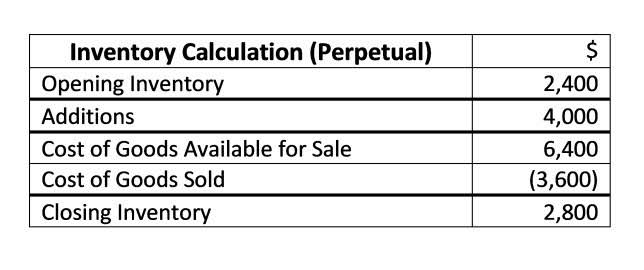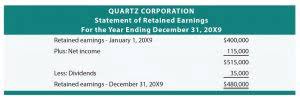
New methodologies allow companies to take a systematic approach to improve profitability and gross margin without having to undergo a massive transformation. ROI is critical to any investor, and knowing how a company is allocating its administrative expenses is a crucial facet of being a successful and savvy investor. General costs are necessary for businesses to operate, they also count as deductions on a company’s tax return. Calculating these costs and reporting them properly can save the company money. General expenses factor into the company’s overall revenue and costs, which has an impact on the bottom line.
- SG&A expenses are incurred in the daily operations of a company, excluding the costs of producing goods or services, and are necessary for the company’s sales and administrative functions.
- It includes expenses such as rent, advertising, marketing, accounting, litigation, travel, meals, management salaries, bonuses, and more.
- Operating costs, aka (OPEX) are expenses companies incur during normal operations.
- Vitezic et al. (2012) research confirmed that the sustainability concept of performance positively relates to financial performance.
- If you’re familiar with operating expenses, you might be wondering what the difference is between SG&A and operating costs.
- SG&A expenses are reported on a company’s income statement, which is part of a company’s annual report.
COGS vs. SG&A: Key Differences in Business Expenses Explained

This margin can tell you a lot about where you stand—it’s the portion of each dollar of revenue that translates into profit after SG&A costs are paid. An optimized gross profit margin, resulting from prudent retained earnings management of COGS, positions your company to better handle these subsequent SG&A expenses. Let’s unpack this acronym to better understand what falls under each category.
Examples of SG&A Expenses

Humans must manage the businesses in order for them to function, which creates administrative expenses. The SG&A sales ratio can be used to monitor the trends of a company’s SG&A expenses in relation to sales, providing insight into profit or helping benchmark to industry averages. Most commonly, non-operating expenses include interest payments, tax provisions, and capital expenditures (CapEx). Understanding SG&A expenses is important for managing overhead costs, knowing where to cut costs if needed, and sustaining profitability.
- Access and download collection of free Templates to help power your productivity and performance.
- However, further analysis would be needed to determine if these costs are producing proportional benefits in sales or brand equity.
- Sometimes, operating expenses are listed under an “operating expenses” heading, though this is not always the case, as seen in these examples.
- The cost to apply for and renew these licenses count as general and administrative expenses.
- For example, general & administrative expenses include the salary and bonus to the company’s management team.
Production Overheads
- Our intuitive software automates the busywork with powerful tools and features designed to help you simplify your financial management and make informed business decisions.
- Some firms classify both depreciation expense and interest expense under SG&A.
- SG&A expenses can also be a significant source of cost savings after mergers and acquisitions because they can create expense redundancies that can be eliminated with little downside.
- On the other hand, low SG & A expenses indicate that a company is operating more efficiently and has a lower cost structure, which is a positive indicator of future profitability.
This covers non-production costs, like sg&a meaning administrative salaries and rent, but excludes production costs. General and administrative expenses are on one line, while marketing is on another. Combined, these two totaled $2.6 billion in Visa’s fiscal year ended Sept. 30, 2023. The previous year’s total was $2.5 billion, up from $2.1 billion in fiscal year 2021.

- Historically, the company’s gross margin was 60% in both periods, while its SG&A margin was 25% and 24% in 2021 and 2022, respectively.
- Apple’s R&D expenses slightly exceed SG&A, highlighting the company’s emphasis on product development.
- Stasz (2003) study showed that gross margin could be improved by integration strategy methodology.
- When you start a business in Canada, there’s a lot to learn, especially about money.
- Banker et al. (2006) inferred that investors do not consider all SG&A expenditure as an expense in the current period.
- These expenses include administrative costs, marketing expenses, and office overheads.
The placement of COGS and SG&A on the income statement reflects their distinct roles in financial performance. COGS appears immediately after revenue, serving as a direct deduction from sales to determine gross profit. This placement highlights its direct relationship with production costs, providing insights into manufacturing or purchasing efficiency. By calculating gross profit, stakeholders can evaluate the effectiveness of production and pricing strategies. SG&A, which stands for Selling, General, and Administrative expenses, refers to the day-to-day costs a business has to pay to keep running, aside from producing its products.
The SG&A formula is calculated by adding up all the expenses incurred by a business that are not directly related to the production of goods or services. This includes selling expenses (such as marketing and advertising), general expenses (such as rent and utilities), and administrative expenses (such as salaries and legal fees). Companies incur these expenses in order https://www.bookstime.com/ to keep their business running. Every company, no matter how efficient, will incur at least some sort of administrative expense.


